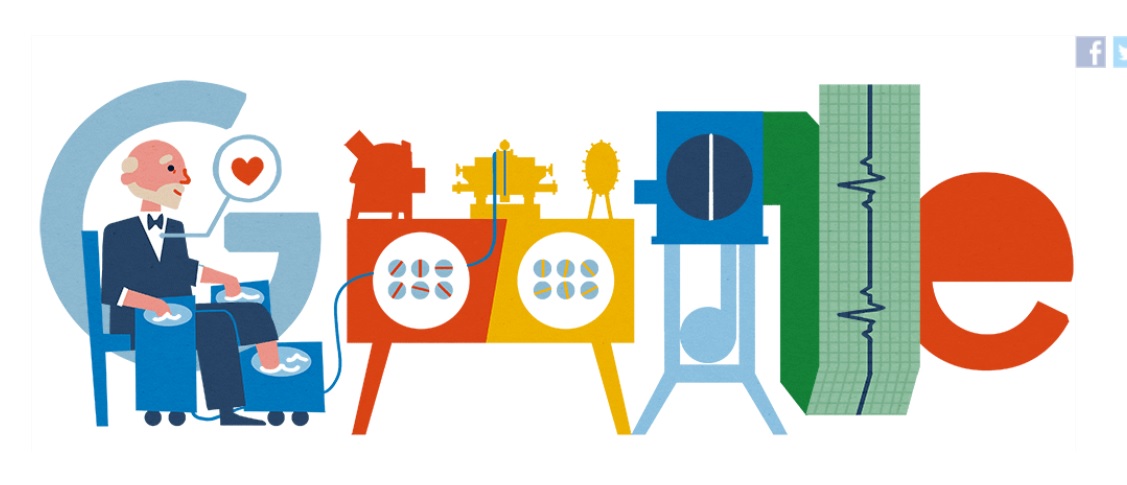Today’s Google doodle on Willem Einthoven – father of electrocardiogram

Today, Google celebrates the 159th birthday of Willem Einthoven with a stunning doodle, who is globally known as the father of electrocardiogram. He invented the first practical electrocardiogram in 1895 and was honoured with Nobel Prize in Medicine in 1924 for the discovery of electrocardiogram’s mechanism.
Willem Einthoven was a Dutch doctor and physiologist. The picture drawn by the Google doodle team is quite fascinating with some senses of humour. The great Dutch personality is observed with both of his hands and one foot inserted in the water. On the other hand, the wires are connected to the water, which further flows through the nicely depicted instruments and represents the cardiogram, which we’re globally utilizing today.
Willem Einthoven was born in Semarang on Java in the Dutch East Indies, which today geographically falls in the Indonesian territory. His dad was also a doctor who died when he was just six-years-old. His mom returned to the Netherlands with her kids and settled in Utrecht in 1870. He received a medical degree in 1885 from the University of Utrecht and got the designation of Professor at the University of Leiden in 1886.
Willem Einthoven published multiple research studies, one of which was on the function of the bronchial muscles investigated by a new method and on nervous asthma. As he previously worked as an assistant to the ophthalmologist H. Snellen Sr. in a renowned eye-hospital, he published his studies titled ‘A simple physiological explanation for various geometric-optical illusions’ in 1898, ‘The accommodation of the human eye’ in 1902, and ‘The form and magnitude of the electric response of the eye to stimulation by light at various intensities’ in 1908.
Willem Einthoven was able to complete a series of prototypes of a string galvanometer that he started working upon in 1901. This device used a very thin filament of conductive wire passing between very strong electromagnets. The term Einthoven’s triangle is named for him, which is an imaginary formation of three limb leads in a triangle used in electrocardiography, formed by the two shoulders and the pubis.
After developing the string galvanometer, he also described the electrocardiographic features of a number of cardiovascular disorders. He also paid attention to the study of acoustics, mainly heart sounds that he researched with Dr P Battaerd.
Einthoven was awarded the Nobel Prize in Medicine in 1924. He was honoured with this prestigious award for inventing the first practical system of electrocardiography and its usage in medical diagnosis. He died on September 29, 1927, at the age of 67. Google today pays tribute to him on his 159th birthday for his severe contribution to medical science with an enthralling doodle.
Also Read: Google honours Minarni Soedarjanto - Queen of all badminton queens - with a doodle










